Behind the Scenes: What Happens After The Cuffs Go On?
“He’s running!” A bag of cocaine is tossed to the ground along with a small handgun. The bad guy takes off. He’s prepared for the sprint—tennis shoes, loose clothing, and he has a small head start … and he’s younger. The runners are always much younger than the pursuing officer. I think this detail is listed somewhere between the covers of the official Bad Guy/Good Guy Handbook.
It’s difficult to chase someone while wearing a suit and dress shoes, but that’s the nature of the beast. So detectives don’t complain, they just do it. Sure, they’ll hear the teasing from the uniforms, later … “Who taught you how to run, your grandma?” “Slowest chase I’ve ever seen.” “Looked like a sack race minus the sack.” “You got weights tied to your ankles?” “You put your feet on backward this morning?” “You do know the purpose of a foot pursuit is to catch the bad guy, right?”
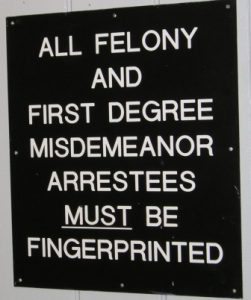
Yeah, that’s really funny, guys. Ha, ha …
In spite of the awkward, wingtip-clad feet, the investigator almost always catches the thug, wrestles to get the cuffs on the crook’s sweaty wrists, and stands him upright for the walk back to the unmarked police car. That’s me in the news photo above, after chasing and catching a guy who’d recently escaped from state prison. And no, I did not have a mullet. I’d started growing my hair out for an upcoming undercover assignment and since it was a brutally hot day I’d shoved some sweaty hair behind my ears. Hey, you chase a guy in August, in southern humidity, while wearing a coat and tie.
Anyway, then it’s back to the police station for processing (aka booking), which includes mugshot photos, fingerprinting, and normally the prisoner’s phone call to his wife, mother, attorney, or bail bondsman. Sometimes, there’s a list of local bail/bond folks beside the jail/lockup phone. I’ve even seen a bondsman’s name and number scrawled or scratched on the wall beside “the phone.”
Signs like this one are reminders for the officers who sometimes have a tendency to forget the details or those who’re inclined to skip a step because it’s 3 a.m. and they’re working overtime and are due in court in six hours.
Officers must lock their weapons inside a lock box before entering the booking area. This is to prevent prisoners from gaining control of a firearm. The officer locks the box and takes the key with him/her.
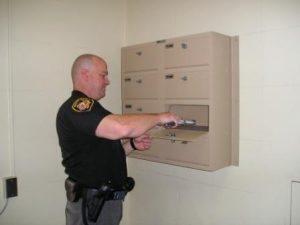
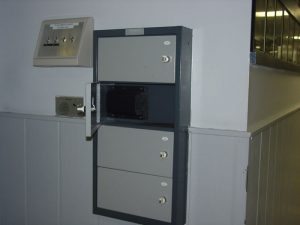
Arrestees are often seated and handcuffed to benches while waiting for processing. Notice the handcuffs attached to the second rail from the left.
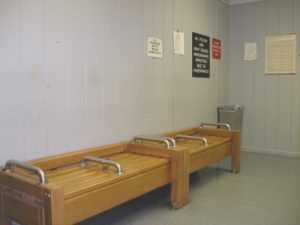
Prisoners are fingerprinted for both in-house records and for the FBI national database, AFIS. Most departments now use automated fingerprinting devices, such as this LiveScan terminal.
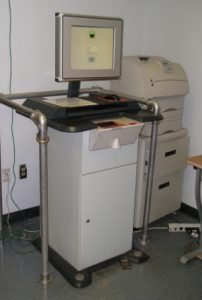
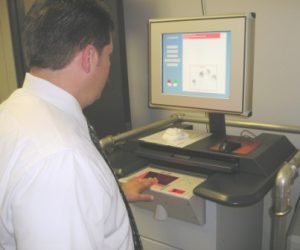
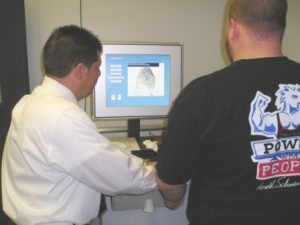
Fingerprints are transferred to a computer terminal where the suspect’s personal information is entered.
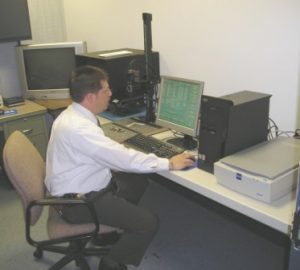
Digital images replace ten-print cards (cards used for capturing inked fingerprints).

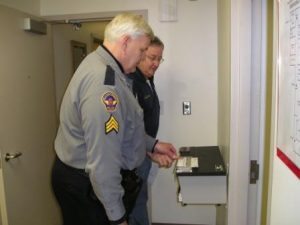
Some departments still use the old ink and ten-print card method of fingerprinting (LiveScan terminals are expensive).
Then, with the processing complete, prisoners are placed into a holding cell until they post bond, or until they are transferred to the county jail to await their first court appearance, usually an arraignment.
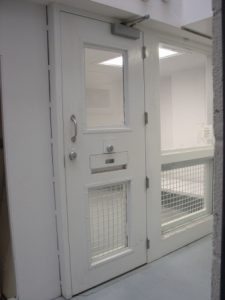
Police department holding cell. Those of you who attended the first Writers’ Police Academy may remember seeing this cell as part of your police department tour.
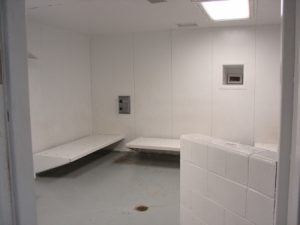
Steel plates mounted on the walls serve as beds (mattresses are issued when the prisoners arrive).
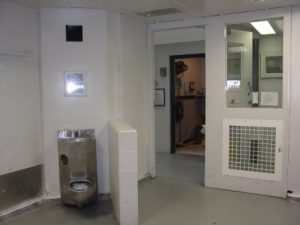
Combination sink, drinking fountain, and toilet.
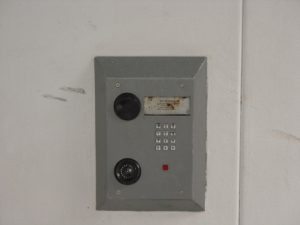
In-cell telephone. Collect calls only.
After processing, the cycle begins again, and again, and again …

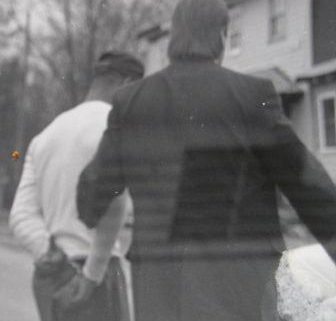



I was fingerprinted when I applied for a teaching certificate. I understand kids are fingerprinted these days, too, to identify them in an emergency.